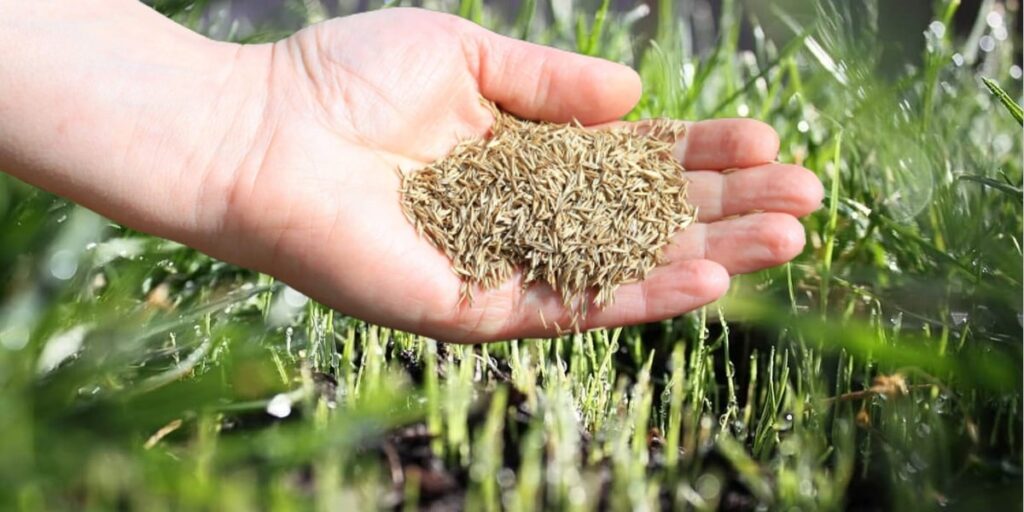
Reviving a lackluster lawn can be as simple as overseeding.
By understanding how to overseed a lawn, you can breathe new life into your outdoor space. This process involves overseeding existing turf with grass seed to fill in bare patches, enhance thickness, and season grasses. Whether you aim to address thinning grass or boost your lawn’s overall health, overseeding is a cost-effective solution with long-lasting benefits. With the right approach and timing, you can achieve lush, green grass that enhances your outdoor aesthetics and enjoyment.
Table of Contents
Understanding Overseeding
Purpose
Overseeding is crucial for maintaining a lush and healthy lawn by filling in bare patches and promoting new growth. It helps improve the overall appearance of your lawn by thickening the grass coverage.
Best Time
The best time to overseed is typically in the fall when the soil is still warm, but the air temperature is cooler. This allows the seeds to germinate effectively without being stressed by extreme heat.
Benefits
Overseeding offers numerous benefits for your lawn’s health. It helps enhance drought tolerance, improves disease resistance, and reduces weed infestation by crowding out unwanted plants. Overseeding can rejuvenate an aging lawn and restore its vibrancy.
Benefits of Overseeding Your Lawn
Improved Lawn Density
Overseeding increases the density of your lawn by introducing new grass seeds and filling in bare patches. This process helps create a lush and thick lawn that looks healthier and more vibrant.
Weed Control
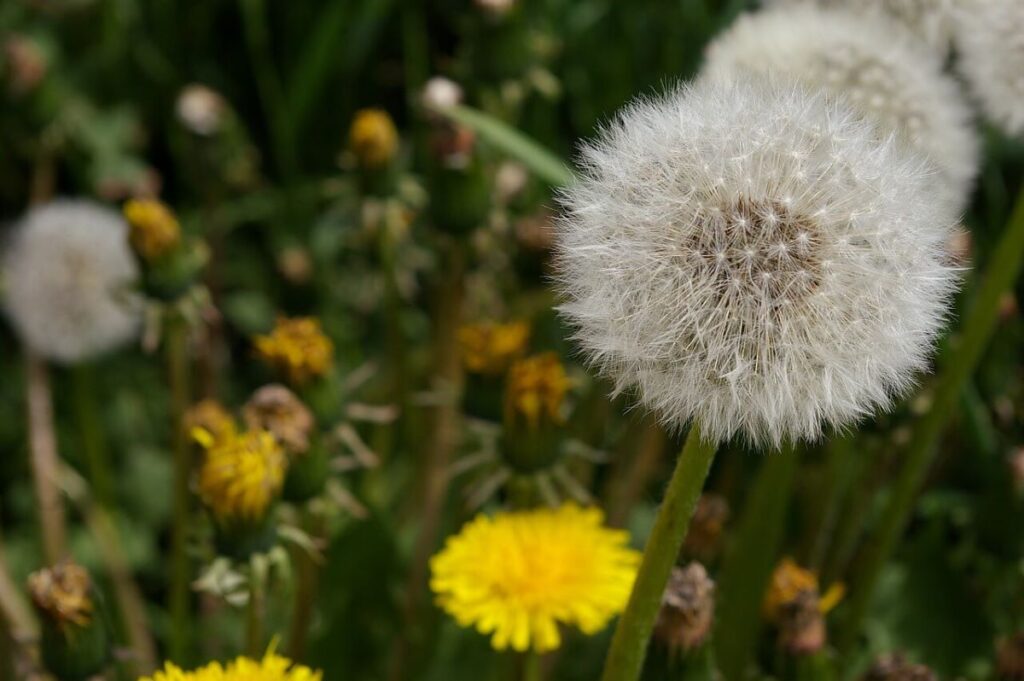
By overseeding your lawn, you can thwart the growth of weeds. The new grass competes with weeds for space and resources, reducing weed infestation naturally without the need for harmful chemicals.
Enhanced Lawn Appearance
Overseeding plays a crucial role in enhancing the overall appearance of your lawn. It helps to rejuvenate tired-looking grass, giving it a fresh, green look that boosts curb appeal and makes your outdoor space more inviting.
Choosing the Right Grass Seed
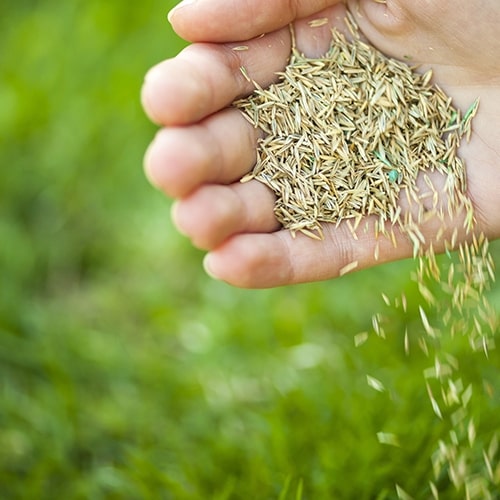
Grass Seed Selection
When choosing the right grass seed for overseeding, it’s crucial to consider factors such as your lawn’s specific needs. Look for grass seed mixes that are suitable for your region’s climate to ensure optimal growth and health. Different types of grass have varying characteristics, so select a seed blend that aligns with your lawn’s requirements.
Climate Suitability
Ensure that the grass seed you choose is appropriate for the climate in your area. Some grass species thrive in cooler temperatures, while others are more suited to warmer climates. By selecting a grass seed variety that is well-adapted to your region’s weather patterns, you can promote successful overseeding and establish a lush, healthy lawn.
Shade Tolerance and Traffic Resistance
When selecting grass seed for overseeding, take into account factors like shade tolerance and traffic resistance. If certain areas of your lawn receive limited sunlight, opt for grass seed varieties that can thrive in shaded conditions. Similarly, if your lawn experiences heavy foot traffic or play activities, choose grass seed blends known for their durability and ability to withstand wear and tear.
Step-by-Step Overseeding Process
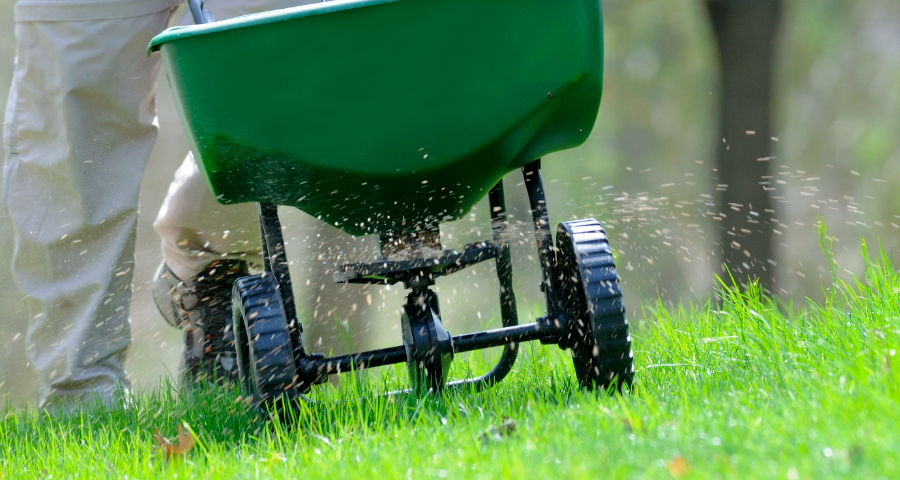
Using a Drop Spreader
To begin the overseeding process, use a drop spreader to evenly distribute the grass seed across your lawn. Start by filling the hopper with the appropriate amount of seed.
Ensure that the drop spreader is set to the recommended setting for overseeding, which can usually be found on the seed packaging. Walk at a steady pace while pushing the spreader to achieve consistent coverage.
Utilizing a Broadcast Spreader
Another effective method for overseeding is using a broadcast spreader. Similar to the drop spreader, fill the hopper with grass seed and adjust the settings according to the seeding rate specified.
Walk in a back-and-forth pattern across your lawn, covering all areas uniformly. The broadcast spreader helps disperse the seeds widely and evenly for better germination rates.
Importance of Even Seed Distribution
Achieving even seed distribution is crucial for successful overseeding. Unevenly distributed seeds may result in patchy growth and an inconsistent appearance.
Fertilizing After Seeding
Types of Fertilizers
Fertilizing after overseeding is crucial for nurturing seedling growth. Different types of fertilizers can be used, such as slow-release fertilizers or starter fertilizers. These options provide essential nutrients for the newly seeded lawn.
Application Rates
When it comes to applying fertilizers post-overseeding, it’s important to follow the recommended application rates. Over-fertilizing can harm the young seedlings, while under-fertilizing may lead to nutrient deficiencies. Following the manufacturer’s instructions is key to ensuring proper growth.
Timing for Best Results
Timing plays a critical role in the success of overseeding. After broadcasting the seeds and ensuring soil contact, wait until the new grass reaches a height of about 3 inches before applying fertilizer. This allows the seedlings to establish themselves before receiving additional nutrients.
Watering Your New Seeds
Moisture Management
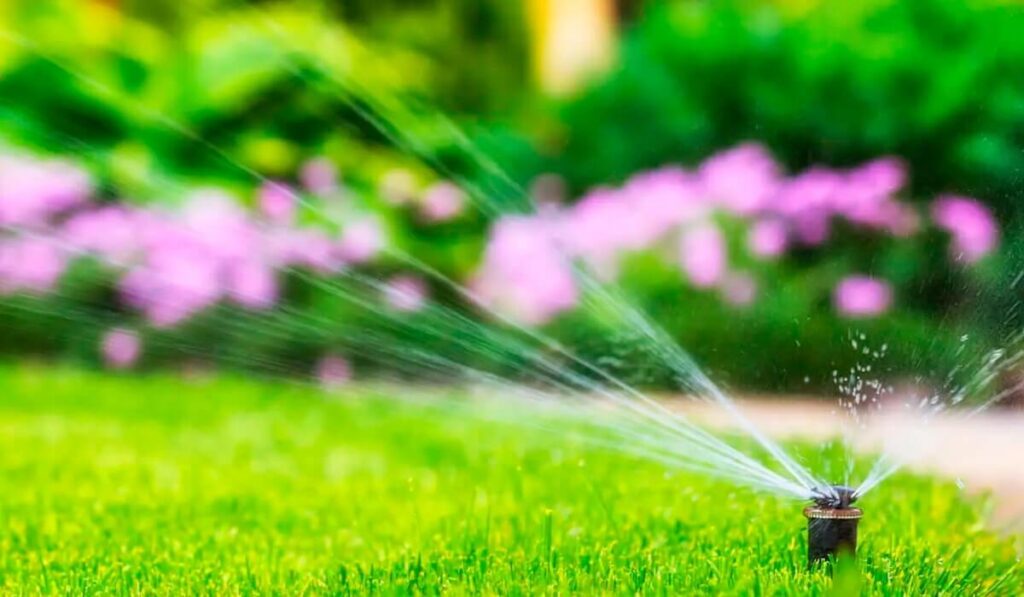
Master the art of watering your new seeds to ensure proper germination. Keeping the soil consistently moist is crucial for seed germination. Avoid watering during the heat of the day. Typically, the best time to water your newly seeded lawn is in the morning hours.
Maintain a watering schedule to provide adequate moisture without waterlogging the soil. Overwatering can lead to weed competition, affecting the germination rate, and can also cause mold to form.
Frequency Control
Understand the importance of watering frequency, especially during the initial stages of post-overseeding. Consistent and moderate watering is key to supporting healthy seed growth.
Avoid creating a wet environment that encourages weed growth. Proper moisture management helps prevent weeds from out-competing the newly planted seeds.
Maintenance Post-Overseeding

Mowing Guidelines
After overseeding your lawn, it’s crucial to maintain a proper mowing routine. Aim to mow your lawn when the new grass reaches around 3 inches in height. Avoid cutting more than one-third of the grass blade at a time to prevent stress on the newly germinated seeds.
Watering and Monitoring
Regular watering is key to ensuring the success of your overseeding efforts. Keep the soil consistently moist but not waterlogged. Utilize a sprinkler system or hose with a gentle setting to avoid washing away the seeds. Monitor the moisture levels daily, especially during dry spells.
Fertilization Tips
Consider applying a starter fertilizer after overseeding to provide essential nutrients for healthy growth. Opt for a fertilizer with a balanced N-P-K ratio, such as 10-10-10, to promote root development and overall plant health.
Pest Control Measures
Inspect your newly overseeded lawn regularly for any signs of pests or diseases. Address any issues promptly by using organic pest control methods or targeted treatments to prevent damage to the young grass plants.
How To Overseed A Lawn: Closing Thoughts
By following the steps outlined in this guide, you can successfully overseed your lawn and reap the benefits of a lush, healthy yard. Understanding the importance of overseeding, preparing your lawn adequately, choosing the right grass seed, and diligently following the overseeding process will set you on the path to a vibrant and resilient lawn. Remember to continue proper maintenance post-overseeding to ensure the long-term health of your grass.
Take action now and transform your lawn into a verdant oasis by implementing these overseeding techniques. Your efforts will not only enhance the aesthetic appeal of your property but also contribute to a greener environment. Start overseeding today and enjoy a beautiful, thriving lawn for years to come.
We have the professional equipment and decades of experience with Raleigh-area lawn types to do the job right the first time. If you’re thinking about overseeding your Lawn, give GrassMaster of Wake County a call at 919-796-1633.
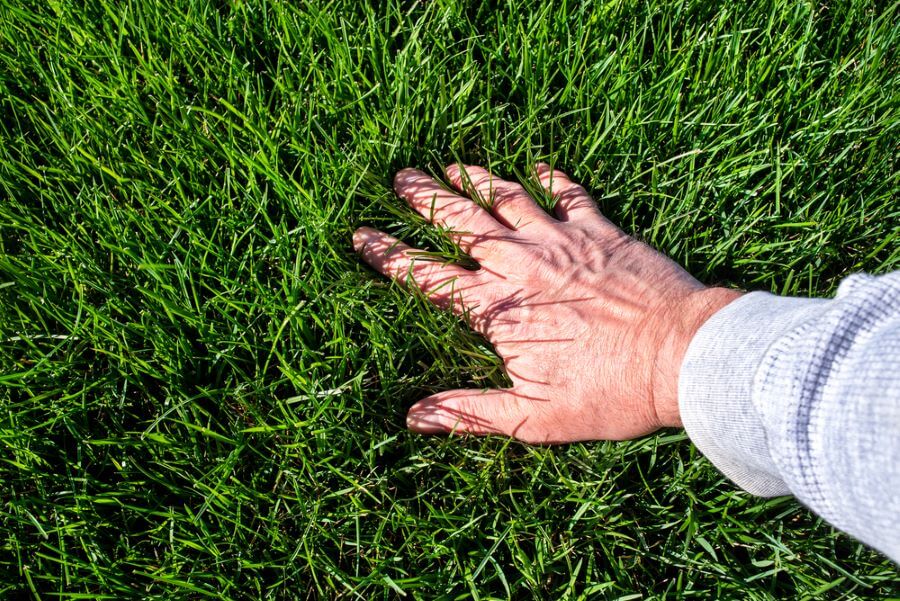
(FAQs) Top Questions On How To Overseed A Lawn
How important is overseeding for maintaining a healthy lawn?
Overseeding is crucial for maintaining a lush, green lawn as it helps fill in bare spots, improve grass density, and enhance the overall appearance of your lawn.
What are the benefits of overseeding my lawn?
Overseeding can help improve the resilience of your lawn against pests, diseases, and drought conditions. It also enhances the color and thickness of the grass, making your lawn look more vibrant and healthy.
When is the best time to overseed a lawn?
The best time to overseed a lawn is during the early fall or spring when temperatures are cooler, and there is typically more moisture in the soil. This allows the new grass seeds to establish and grow successfully.
How do I choose the right grass seed for overseeding?
When selecting grass seed for overseeding, consider factors like your climate zone, sun exposure, soil type, and intended use of the area (e.g., high traffic or decorative). Choose a high-quality seed blend that suits your specific lawn conditions.
Do I need to fertilize after overseeding my lawn?
Yes, it’s essential to fertilize after overseeding to provide the necessary nutrients for the new grass seeds to germinate and establish strong root systems. Use a balanced fertilizer with a higher phosphorus content to promote root growth.

